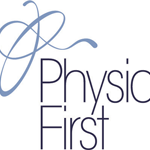Plantar fasciitis is one of the leading causes of foot pain in adults. Plantar Fasciitis is responsible for over one million visits to the doctor per year. Hart Physio is proud to offer Shockwave Therapy for the treatment of Plantar Fasciitis.
The plantar fascia is a thick sheet of connective tissue located on the bottom of the foot that runs from the heel to the toes. The fascia attaches to the skin on the bottom of the foot. When people have plantar fasciitis, they will complain of pain when they initiate walking. Although the reason people get plantar fasciitis is unknown, Consultants and Physiotherapists believe many factors cause this condition that include: flat feet, decreased ankle mobility, obesity, and prolonged sitting or standing. However, in runners, there seems to be an increased incidence of this condition, some doctors think that repeated microtrauma can be another cause of plantar fasciitis.
Plantar fasciitis was a frustrating condition for people who had this diagnosis. The old treatment paradigm relied on conservative therapy for an extended period. This treatment strategy includes rest, shoe inserts, stretching of the calf muscles, and a glucocorticoid injections for temporary relief. If these treatment modalities did not improve symptoms after six months to a year of treatment, then surgery was someone’s only definitive therapy.
Now, with the invention of extracorporeal shockwave therapy, patients have a new option of treatments that is showing promise when compared to conservative treatment. Although the exact mechanism is unknown, many researchers believe that the shockwaves administered to the plantar fascia causes the break down of the scar tissue and allow the fascia to begin to heal. Scar tissue blocks the regeneration of vessels that can bring nutrients to the damaged tissue. In Europe, this therapy was approved for the past decade. Now it is being used in the United States, Canada and the UK. This treatment was shown to be is safe for use in the general population5. When comparing shockwave therapy to surgical intervention, studies demonstrate that it had better outcomes6. As of today, no study proves that extra corporeal shockwave therapy is better than conservative therapy head to head, but research shows that a combination of shockwave and conservative therapy is better than conservative therapy alone7. As a result of this research, many orthopedic surgeons are recommending shockwave therapy as a treatment after only four weeks of conservative treatments8. The use of shockwave therapy expedites the healing process by months.









Recent Comments